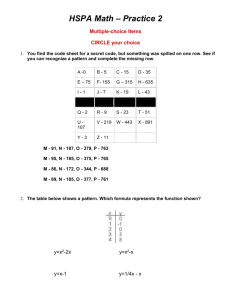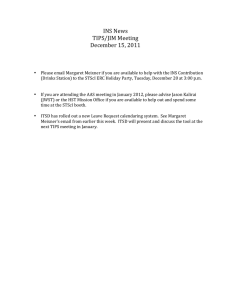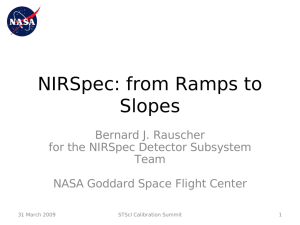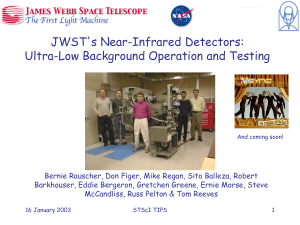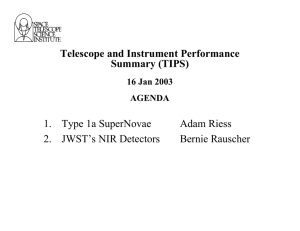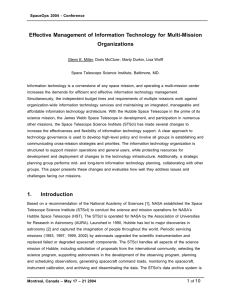Quantum Efficiency Measurements of a NIRSpec infrared sensor in the ODL*
advertisement
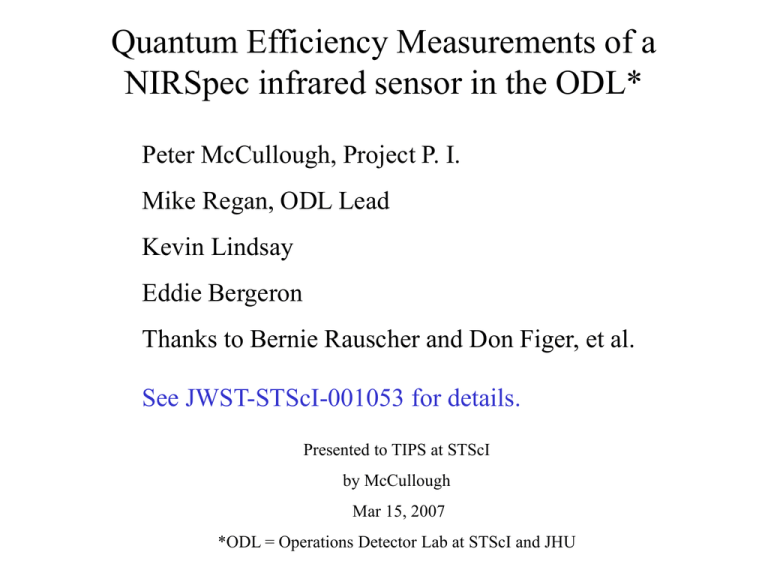
Quantum Efficiency Measurements of a NIRSpec infrared sensor in the ODL* Peter McCullough, Project P. I. Mike Regan, ODL Lead Kevin Lindsay Eddie Bergeron Thanks to Bernie Rauscher and Don Figer, et al. See JWST-STScI-001053 for details. Presented to TIPS at STScI by McCullough Mar 15, 2007 *ODL = Operations Detector Lab at STScI and JHU Monochromator Optical Coupling Lamp Lockin and cable for PbSe diode Blackbody Image of Blackbody 8 •Blackbody •Window •Filter •Pinhole •Detector •Dewar Simple Predictable R Contours are in counts (ADUs) Insert Integrating Sphere to make flat fields Flat Field 4.5 um (Subsampled to 512x512) White: QE=1.05 Black: QE<0.85 Bad pixels: << 1% by number Corners have low QE Reference pixels visible as black edges Flat Field 3.9 um (Subsampled to 512x512) White: QE=1.05 Black: QE<0.85 Bad pixels: << 1% by number Corners have low QE Reference pixels visible as black edges (Same caption as previous slide, just different wavelength). Gain requires accurate nonlinearity correction 0.8 um photons give different gain than 1.8 um photons. Interpreted as due to a quantum yield. Analysis in preparation. 2 Gain versus wavelength and binning Bin factor 1 2 3 4 5 1 0 0.8 Wavelength (um) 2.7 Apparent Gain depends on binning, due to interpixel capacitance. 0 z 0 z 1-4z z 0 z 0 (circuit diagram from Finger et al. 2005) Summary JWST-STScI-001053 • Rockwell (Teledyne) 2kx2k sensor H2RG-S010 tested in Operations Detector Lab at STScI. • Median QE = 95% within 5% (1 sigma) at tested wavelengths (3.38, 3.9, 4.5 microns). • Interpixel capacitance (IPC) is significant and blurs images due to the 2.5% crosstalk to each of the 4 nearest-neighbor pixels. Neglecting this crosstalk would cause the QE to be overestimated by 2*4*2.5% = 20%. This is apparently typical for epoxy-filled H2RG devices. • New analysis (binning method) invented to account for IPC in measurement of system gain; alternative to autocorrelation method previously used. Intuitive and more resistant to EMI. • Analysis of measurements from 0.5 to 6.0 um in preparation.


